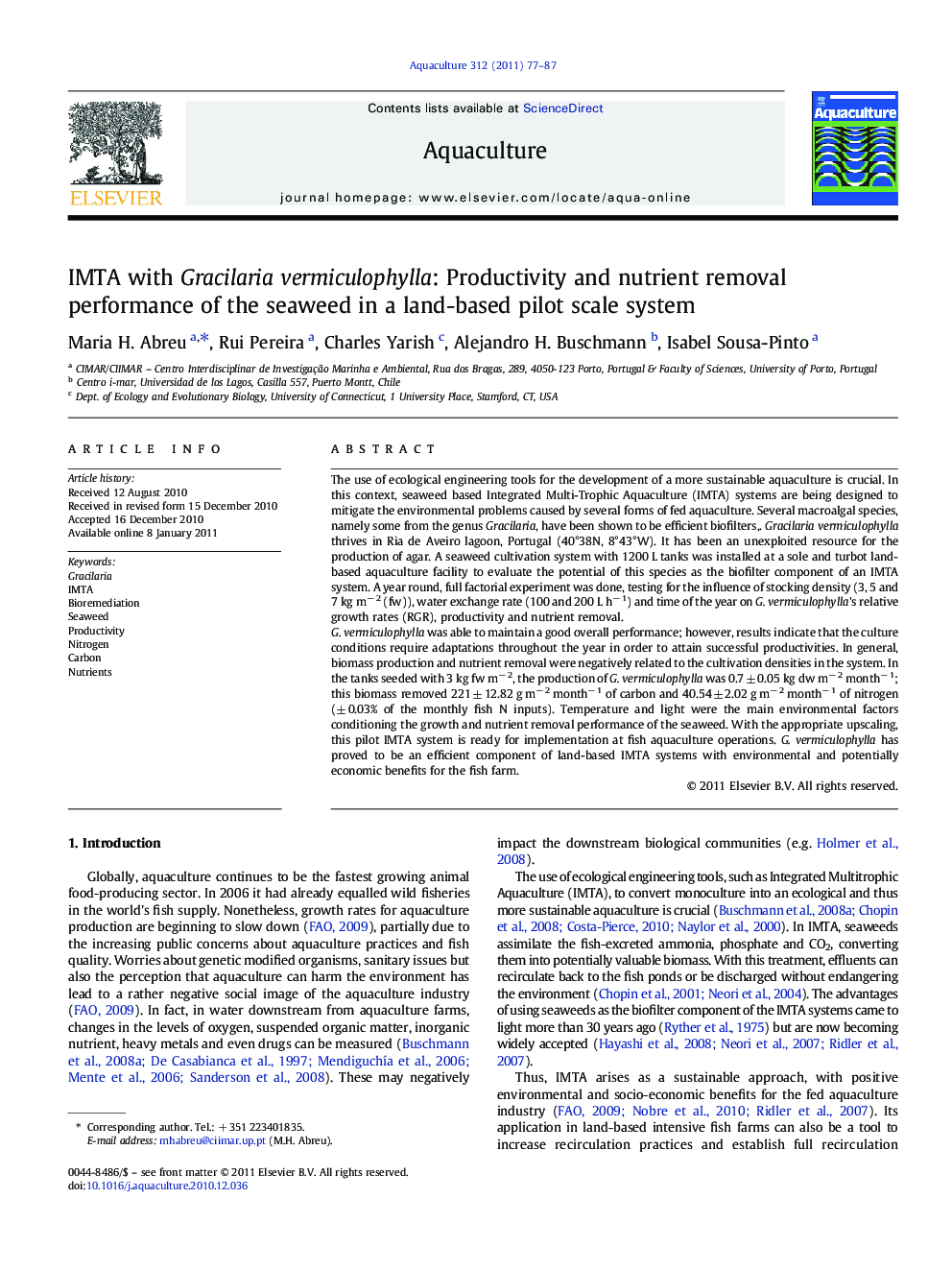| کد مقاله | کد نشریه | سال انتشار | مقاله انگلیسی | نسخه تمام متن |
|---|---|---|---|---|
| 2423291 | 1552913 | 2011 | 11 صفحه PDF | دانلود رایگان |

The use of ecological engineering tools for the development of a more sustainable aquaculture is crucial. In this context, seaweed based Integrated Multi-Trophic Aquaculture (IMTA) systems are being designed to mitigate the environmental problems caused by several forms of fed aquaculture. Several macroalgal species, namely some from the genus Gracilaria, have been shown to be efficient biofilters,. Gracilaria vermiculophylla thrives in Ria de Aveiro lagoon, Portugal (40°38N, 8°43°W). It has been an unexploited resource for the production of agar. A seaweed cultivation system with 1200 L tanks was installed at a sole and turbot land-based aquaculture facility to evaluate the potential of this species as the biofilter component of an IMTA system. A year round, full factorial experiment was done, testing for the influence of stocking density (3, 5 and 7 kg m− 2 (fw)), water exchange rate (100 and 200 L h− 1) and time of the year on G. vermiculophylla's relative growth rates (RGR), productivity and nutrient removal.G. vermiculophylla was able to maintain a good overall performance; however, results indicate that the culture conditions require adaptations throughout the year in order to attain successful productivities. In general, biomass production and nutrient removal were negatively related to the cultivation densities in the system. In the tanks seeded with 3 kg fw m− 2, the production of G. vermiculophylla was 0.7 ± 0.05 kg dw m− 2 month− 1; this biomass removed 221 ± 12.82 g m− 2 month− 1 of carbon and 40.54 ± 2.02 g m− 2 month− 1 of nitrogen (± 0.03% of the monthly fish N inputs). Temperature and light were the main environmental factors conditioning the growth and nutrient removal performance of the seaweed. With the appropriate upscaling, this pilot IMTA system is ready for implementation at fish aquaculture operations. G. vermiculophylla has proved to be an efficient component of land-based IMTA systems with environmental and potentially economic benefits for the fish farm.
Journal: Aquaculture - Volume 312, Issues 1–4, 25 February 2011, Pages 77–87